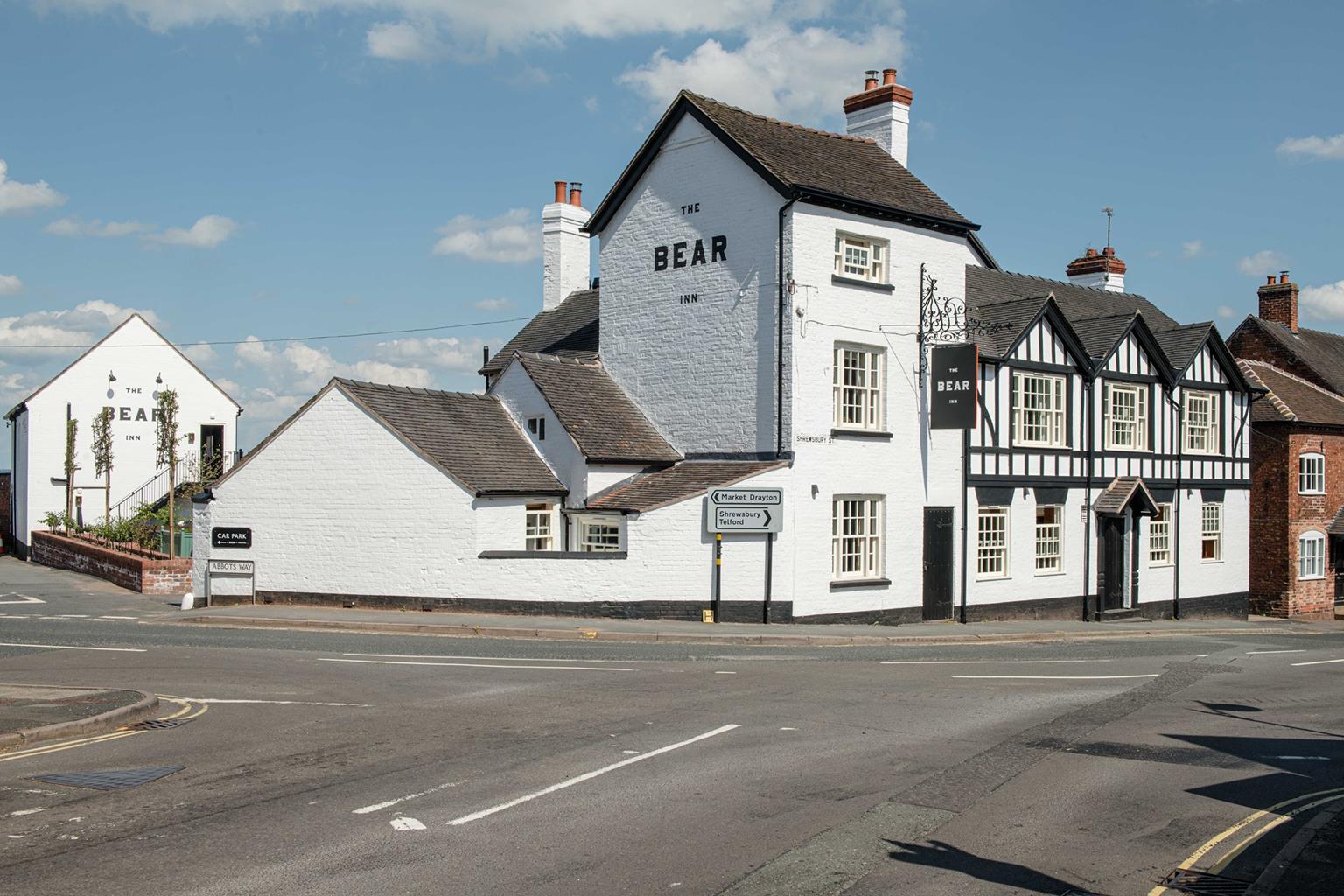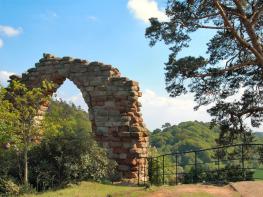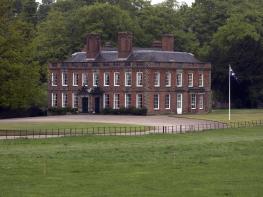This elegant Grade II listed Georgian property, once a farmhouse, has been lovingly converted…
South from Market Drayton

5.25 miles (8.4kms)
About the walk
In 1245, at the behest of Abbot Simon of Combermere Abbey, Henry III granted Market Drayton a charter for a Wednesday market and two annual fairs. Marketing has been its main role ever since, serving a large area of rural Shropshire, Staffordshire and Cheshire. Abbot Simon wasn't just thinking of the local peasants and farmers - his monks had their own produce to sell. They cultivated vines and kept honeybees, as well as participating in dairy farming, which flourished in the fertile countryside. Food has always been the main focus for Market Drayton's traders and, even today, the town is full of small, independent shops selling a wide range of locally made produce. Every Wednesday Cheshire Street is still submerged by a flood of colourful stalls heaped high with food, along with goods from the Staffordshire Potteries. So you can buy your cake and the plate to eat it from too.
Sweet-toothed Town
To compete in the modern world, Drayton now markets itself and the theme is still food, as it tries to entice tourists to the 'home of gingerbread'. First made here in 1817, for many years there were four gingerbread dynasties in town, each with its own secret recipe. People then enjoyed gingerbread in 'junks as big as my foot', but nowadays you can buy it fashioned into hearts, teddy bears, sheep or footballers. Traditionally, Draytonians dunked their gingerbread in port and one of the most popular recipes already contained rum. Billington's gingerbread is still made locally to a secret recipe, but Drayton also boasts plenty of other specialities, such as damson jam, damson cheese and damson gin, which possibly goes down well with a bit of rum-soaked, port-dunked gingerbread. Go into one of the bakers in town and you can choose from other local treats like butter buns, lardy cakes and oven bottoms, while pikelets and oatcakes from the Potteries are popular too. Since the 16th century, Drayton has been famous for dairy goods. Yogurt is made in a factory on the edge of town, but farm-made yogurts are also on sale in the shops, along with excellent cheeses. It is said that the only un-pasteurised Cheshire cheese still made in England comes from Market Drayton.
Clive's Contribution
Robert Clive was born near Market Drayton in 1725 and he terrorised the town as a boy. His despairing family packed him off to India where he achieved great wealth and prestige in the process of establishing British supremacy there. Despite his fame, it's his culinary contribution they celebrate in Drayton. At the Clive and Coffyne (a coffyne is a pie case) they serve an award-winning Clive of India Pie which is said to be based on a recipe given by Clive in 1768 to the bakers of Pézenas in France.
Walk directions
Walk past the bus station, cross at the zebra crossing, then turn left down Queen Street (part pedestrianised) then left on Stafford Street. Go straight on at the first junction, right at the next on to Great Hales Street and then left on Berrisford Road (use the easily missed footway on the left until forced to join the road).
You'll soon come to Berrisford Bridge, also known as 40 Steps Aqueduct, which carries the Shropshire Union Canal over the road. Go up the steps and turn right on the towpath. This part of the Shroppie system was originally the Birmingham and Liverpool Junction Canal, which went from Autherley to Nantwich. The engineer was Thomas Telford and the boldness of his design is apparent along this stretch, with its massive cuttings and embankments. The deep cutting on the approach to Tyrley Locks has its own microclimate, and positively drips with ferns, mosses and liverworts. The towpath marks the county boundary - this stretch of the canal is in Staffordshire.
Go under Bridge 60 by Tyrley Wharf then up steps to the lock gate. Turn sharp right to the lane (Tyrley Road) and turn left. This leads to the main road (A529) and a pub called The Four Alls. Cross with care to Sandy Lane.
Sandy Lane comes to a T-junction with a track. Turn right here; it's still Sandy Lane, but this part is a private road and dogs must be kept on a lead. It heads north towards Drayton, overlooked by Salisbury Hill, where a Yorkist army under the Earl of Salisbury camped in 1459 before heavily defeating a Lancastrian force twice the size.
When you meet a road, turn right to cross the River Tern at Walkmill Bridge (a packhorse bridge). Cross a wider road and go up Kilnbank Road opposite. Where it ends, turn right. After passing Sandbrook Vaults, turn left past the Buttercross to Cheshire Street, which leads back to Towers Lawn.
Additional information
Streets, towpath, sandy track and quiet lanes
Market town, canal and mixed farmland
On lead between Point 4 and Walkmill Bridge
OS Explorer 243 Market Drayton
Car park on Towers Lawn, next to bus station
At bus station
WALKING IN SAFETY
Read our tips to look after yourself and the environment when following this walk.
Find out more
Also in the area
About the area
Discover Shropshire
Perhaps nowhere else in England will you find a county so deeply rural and with so much variety as Shropshire. Choose a clear day, climb to the top of The Wrekin, and look down on that ‘land of lost content’ so wistfully evoked by A E Housman. Peer through your binoculars and trace the course of Britain’s longest river as the Severn sweeps through the county, from the Breidden Hills to Wyre Forest, slicing Shropshire in two. To the north is a patchwork of dairy fields, hedgerows, copses and crops, broken at intervals by rugged sandstone ridges such as Grinshill or Nesscliffe, and dissected by a complex network of canals.
Spilling over the border into neighbouring Cheshire and North Wales is the unique meres and mosses country, with serenely smooth lakes glinting silver, interspersed with russet-tinged expanses of alder-fringed peat bog, where only the cry of the curlew disturbs the silence. South of the Severn lies the Shropshire Hills AONB. It’s only when you walk Wenlock Edge that you fully discover what a magical place it is – glorious woods and unexpectedly steep slopes plunge to innumerable secret valleys, meadows, streams and farmhouses, all tucked away, invisible from the outside world.
Nearby stays
Restaurants and Pubs
Nearby experiences
Recommended things to do
Why choose Rated Trips?
Your trusted guide to rated places across the UK
The best coverage
Discover more than 15,000 professionally rated places to stay, eat and visit from across the UK and Ireland.
Quality assured
Choose a place to stay safe in the knowledge that it has been expertly assessed by trained assessors.
Plan your next trip
Search by location or the type of place you're visiting to find your next ideal holiday experience.
Travel inspiration
Read our articles, city guides and recommended things to do for inspiration. We're here to help you explore the UK.













